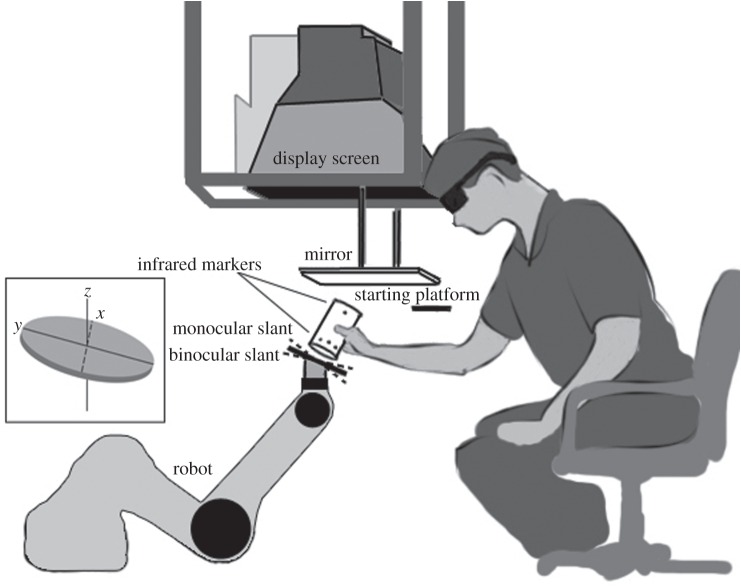Figure 2.
Stimuli were displayed on an inverted 22-inch Mitsubishi Diamond Pro 2070SB CRT monitor, with screen resolution 1152 × 864 pixels and refresh rate 120 Hz. Observers viewed the reflections of the stereoscopically presented stimuli through a mirror using Crystal Eyes shutter glasses (StereoGraphics Corporation, San Rafael, CA). An opaque black plate was placed beneath the mirror, so that subjects could see only the virtual image of the display formed below the mirror. A PUMA 260 robot arm, invisible to the subject, coaligned a circular metal (target) surface with the virtual image at a distance of 63.5 cm from the viewer's eyes. The slant of the target surface was defined as its orientation around the x-axis relative to subject's line of sight (see dashed line in the figure inset), and a 0° slant indicated frontoparallel. Monocular and binocular slants differed on cue-conflict trials, but subjects perceived the stimuli as a single slanted disc. Head movements were restricted with head and chin rests. Subjects' task was to move a cylinder from the starting platform and place it flush onto the real surface to squash the virtual image. The slant of the real surface was determined by the mean of the monocular and binocular slants. The starting platform was 40 cm to the right of the target surface, 20 cm closer to the subject than the target surface, and 16.5 cm above the target surface (all measured from the subject's point of view).

